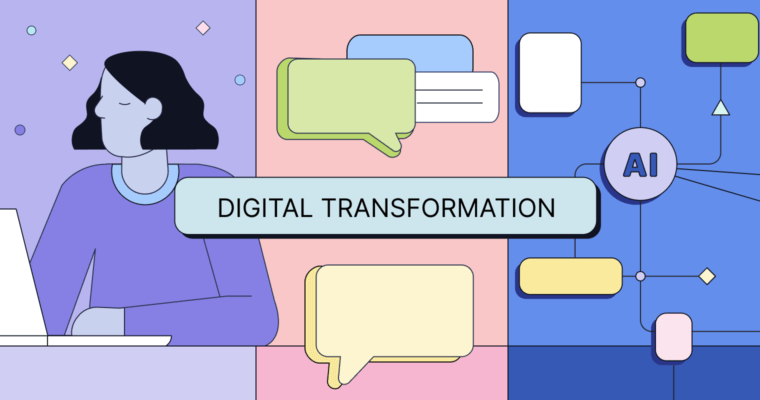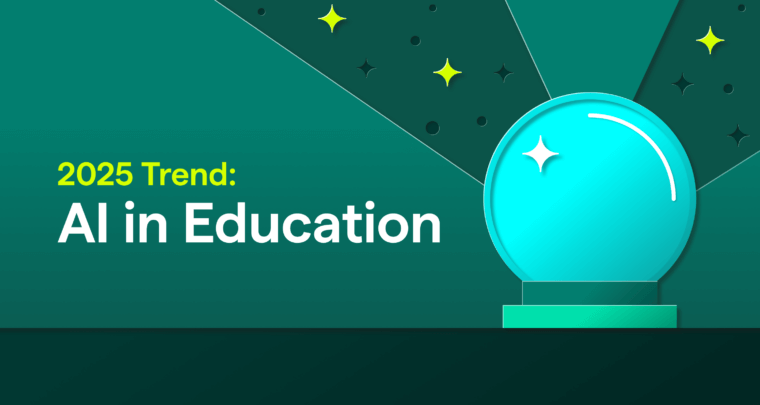
Every higher education institution shapes the student experience by applying a storied history to its own unique traditions. But there’s one area where every institution must depart from tradition to prepare students for what happens after they graduate, and for a central characteristic of the working world: digital transformation.
Digital transformation is a common buzzword in the business space. It’s making waves in higher education because of its universal impact on the skills students need to have when they enter a professional work environment. To set students up for success in life after college, no matter what their profession or line of work, institutions must prepare students to communicate effectively and perform in a digital environment.
This is a big undertaking. It’s only by complete immersion and repeated exposure to the means of digital transformation—such as new communication practices, patterns, and platforms—that students can fully gain the experience and competence required to succeed. Institutions must not only prepare students for digital transformation in the workplace but also immerse students in it throughout the educational experience.
That’s a tall order for most institutions today, when only about 24 percent of CIOs or CTOs say their institution has made digital transformation a priority (a percentage that jumps to 52 percent if the CIO or CTO is a member of the president’s cabinet).
Institutions face pressure to prepare students for classes, careers, and beyond—a challenge that’s inseparable from digital transformation. Here are three areas where institutions must design their approach to student success around new practices that welcome and celebrate technology.
1 Incorporating student-centered digital learning practices
“Universities and teaching should go through a significant digital transformation to fulfill the demands of today’s generation and the fully digitized world they will be living in,” write researchers Mohammad Akour and Mamdouh Alenezi.
But to function in a fully digitized world, students need to be exposed to a digitized learning environment and given resources that will help them overcome the digital divide they may encounter outside the institutional ecosystem. Today, that starts with student-centered digital learning practices like those highlighted by EDUCAUSE:
- Computers, internet access, and cloud-based technologies
- Synchronous communication technologies like audio, video, and text/chat
- Time management and self-regulation
- Instructional content and teachers
- Help desk support
- Community building and networking
For some institutions, it’s a matter of systematically embracing and implementing these digital learning practices and making resources available. For other institutions, it’s a matter of promoting and systematizing the practices already in place that are not used enough by the student population and increasing access to resources.
2 Augmenting in-person learning with AI and advanced technology
Digital learning technologies like learning management systems have been in use in higher education for decades. But some institutions are now taking digital transformation one step further by exploring AI and advanced technologies. Case studies from the Online Learning Consortium show that these technologies “enable more innovative and engaging teaching methods and learning experiences,” and they do so at scale.
For example, one instructor used adaptive courseware to increase student success in gateway mathematics courses at the University of Central Florida. Adaptive learning technologies give students activities, assessments, and feedback in a personalized way, allowing institutions to augment learning and assessment for students who have no other instructional support.
Other institutions use Grammarly for Education to assist students with an AI-powered writing tutor, giving them insights and feedback about important communication concepts like tone and clarity in real time. This kind of personalized support is instantly scalable—it serves any student who chooses to use it—making it easier to augment in-person learning without putting additional strain on overburdened instructors.
3 Supporting instructors with technology education
Digital teaching and learning is an expertise of its own, which means there will be a period of adjustment for instructors as they adapt to digital transformation within the higher education classroom. Many institutions see a need for additional training, support, and services for instructors and personnel to prepare to serve students in this way.
Where instructor development is concerned, institutions might consider the following training areas highlighted by EDUCAUSE:
- Pedagogical and technological skills
- Faculty attitudes and beliefs about digital transformation
- Accessibility for physical and cognitive disabilities
- Copyrights and intellectual property rights
For some institutions, investments to support instructors with technology education can have the same effect as adding personnel. What’s more, this new training for existing staff members can provide incentives and recognition. Meanwhile, other institutions will see a need for additional instructional designers, technology support specialists, or academic and student support services staff.
Help students and staff make the most of the digital era
Digital transformation is central to the modern workplace, and that’s why it must become central to the modern higher education experience. If students lack experience with learning, assessment, and feedback from digital sources, they will graduate into a strange new world—one they may not be prepared to face.
If digital transformation isn’t a top priority at your institution, it’s not too late to make it one. In fact, the digital transformation of higher education is still in its infancy, and that’s why so many institutions are prioritizing student-centered digital learning, AI and advanced technology, and instructor support in their budgets for the coming year. Now is the time to support instructors, staff, and students in making the most of all the opportunities embedded in digital transformation.
Prepare your students for a world that has embraced digital transformation. Contact our team to learn more about Grammarly for Education.






